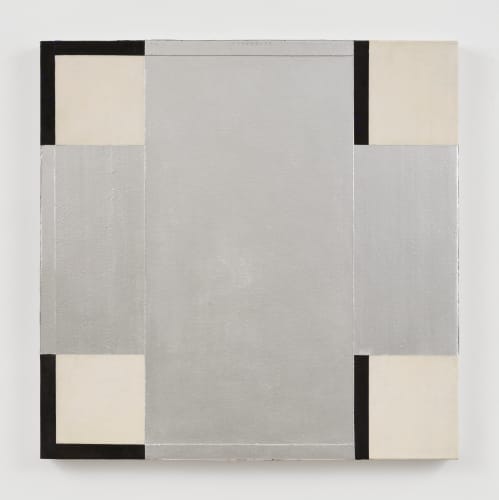A Little Touch of Grace
Past exhibition
-
OverviewVan Doren Waxter is pleased to present “A Little Touch of Grace,” a group exhibition of works by Farid Haddad, John McLaughlin, Richard Pousette-Dart, Harvey Quaytman, Hedda Sterne, Anne Truitt, Jack Tworkov.From a glance, it is not difficult to understand where these paintings stand in art history. They appear to be straightforward geometric abstractions until they firmly reveal their complex layers of various geometrical and psychological perspectives. In her studio journal “The Daybook,” Anne Truitt writes, “(…) I was asked where I thought art came from, from what part of the mind. I answered that I did not know but I thought it possible to put one’s self in the way of art much in the same way that cloistered devotees place themselves in the way of religious experience. Art comes, if we are blessed with what Jack Tworkov called ‘a little touch of grace,’ into the highest part of the mind, that with which we can know the presence of God. But we have to pay attention to that area in order to notice the grace, or even perhaps to attract it.” Despite the artists’ different methods of making, there is a discovery of quietness and stillness among the echoes of contradiction in these paintings. They are vessels that hold both literal and abstract space, offering the viewers a place beyond linear shapes and gentle fields of color–– a place of meditation.The paintings by Farid Haddad (b. 1945 – ) and Jack Tworkov (b. 1900 – d. 1982) in this exhibition are the most gestural. There is a significant presence of the artist’s hand felt through the painterly marks in the four large paintings. There are geometric forms, but only in a loose and scattered sense. The sweeping gestures in these paintings bring in an energetically charged static, although these are not spontaneous marks resulting from intuitive movements found in action paintings. In these paintings, the existing grids and structures are twisted and shattered through carefully placed calligraphic marks.Anne Truitt (b. 1921– d. 2004) and John McLaughlin (b. 1989 – d. 1976) had an unconventional journey as artists. Truitt worked as a Red Cross Nurse’s aid until she received about a year and a half of professional academic education as a sculptor, and McLaughlin was a Japanese print dealer turned self-trained painter. Their paintings in this exhibition are perhaps the most abstract, in the sense that the images relate to no other shape or form the viewers may be familiar with. The colors can be identified, but the small scale of these works rejects the possibility of becoming immersive color fields like a Rothko or a Frank Stella painting. Both Truitt and McLaughlin were interested in the construction of an artistic structure and distanced themselves from the desire for evocation. They espoused the rectangle as it was the least symbolically charged form, which makes it the best ground to hold the phenomenon of the material that is paint.The painting of Richard Pousette-Dart (b. 1916 – d. 1992) is perhaps the most symbolic one in this exhibition. A central circle in the painting evokes a sense of astronomical power, in a way that suns, moons, and halos do in historical paintings. The circle is not only a geometric shape but also a totemic one, which allows the abstract marks in the negative space to relate to celestial environments. Through the central composition and the glowing contrast between the warm yellow and blue, Pousette-Dart’s painting invites a spiritual encounter beyond the exploration of form, color, and texture.The square painting of Harvey Quaytman (b. 1937 – d. 2002) in this exhibition demonstrates a cross shape in the center, which was a form that he explored in many of his works. Painted densely with aluminum paint, the cross divides the square surface into smaller squares and rectangles. The image is seemingly flat but not entirely, with minimal but precise brushstrokes that add an extra dimension. Grounded in the process of ordering geometric shapes, within one another or against each other, Quaytman’s painting brings strength to the carefully built-up material surface.The painting created in 1985 by Hedda Sterne (b.1910 – d. 2011) in this exhibition has the quintessential traits of her works made in the 80s–– overlapping angular, strict central axis, symmetry, muted colors, and straight but soft lines achieved through the texture of charcoal or pastel on linen. As a Buddhist, meditation and spiritual engagement were an important part of Sterne’s life and studio practice. In the 80s when she made these prismatic abstractions, she wrote to her friend Mary Ann Caws, a surrealist scholar, “I am only totally alive when I conjure these images: I wish I could understand what they really are– where they come from and why…?”
-
Works
-
Installation Shots
-
News
No news items are available relating to this exhibition.
-
Artist














